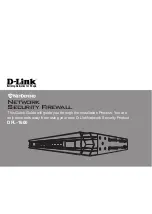
27. Network Discovery
ROX™ v2.2 User Guide
278
RuggedBackbone™ RX5000
27. Network Discovery
Figure 27.1. Net-discovery menu
The Net-discovery menu is accessible from the main menu under switch. The path to this menu is
switch/net-discovery.
ROX™ supports LLDP (the Link Layer Discovery Protocol), a Layer 2 protocol for automated network
discovery.
LLDP is an IEEE standard protocol, IEEE 802.11AB, which allows a networked device to advertise its
own basic networking capabilities and configuration. ROX™ is capable of advertising and collecting
network information via LLDP. LLDP functionality in ROX™ includes the ability to:
• Enable or disable LLDP reception and transmission per port or for the whole device.
• View LLDP statistics.
• View ‘neighbor’ information.
• Report LLDP neighbor information via SNMP.
27.1. LLDP Operation
The IEEE standard, 802.1AB Link Layer Discovery Protocol (LLDP), describes a protocol that can
simplify the troubleshooting of complex networks and can be used by Network Management Systems
(NMS) to obtain and monitor detailed information about a network’s topology. LLDP data are made
available via SNMP (through support of LLDP-MIB).
LLDP allows a networked device to discover its neighbors across connected network links using a
standard mechanism. Devices that support LLDP are able to advertise information about themselves,
including their capabilities, configuration, interconnections, and identifying information.
LLDP agent operation is typically implemented as two modules: the LLDP transmit module and LLDP
receive module. The LLDP transmit module, when enabled, sends the local device’s information at
regular intervals, in 802.1AB standard format. Whenever the transmit module is disabled, it transmits
an LLDPDU (LLDP data unit) with a time-to-live (TTL) TLV containing "0" in the information field. This
enables remote devices to remove the information associated with the local device in their databases.
The LLDP receive module, when enabled, receives remote devices’ information and updates its LLDP
database of remote systems. When new or updated information is received, the receive module initiates
a timer for the valid duration indicated by the TTL TLV in the received LLDPDU. A remote system’s
information is removed from the database when an LLDPDU is received from it with TTL TLV containing
"0" in its information field.
LLDP is implemented to keep a record of only one device per Ethernet port. Therefore,
if there are multiple devices sending LLDP information to a switch port on which LLDP is
enabled, information about the neighbor on that port will change constantly.
















































